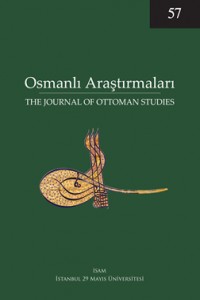Emine Fetvacı, The Album of the World Emperor: Cross-Cultural Collecting and the Art of Album-Making in Seventeenth-Century Istanbul,
Öz
In The Album of the World Emperor: Cross-Cultural Collecting and the Art of Album-Making in Seventeenth-Century Istanbul Fetvacı makes available a dazzling album––the album of Ahmed I (Topkapı Palace Museum Library, B. 408)––to a broad audience, and provides a first comprehensive study of this work. Compiled by the courtier Kalender Paşa (d. 1616), this album is a striking gathering of a variety of materials, including calligraphy, painting and print, joined together artfully by the handiwork of Kalender himself. This album is remarkable in many ways. Diverse samples of painting, print, and calligraphy are put together through the fine paper joinery skills of Kalender Paşa, for which he was well-known. The
compiler has also composed a seven-page preface in which he discusses the edifi- catory and sensorial aspects of the album. The Album of Ahmed I, while making references to older albums in the palace library, also diverges from these and the unified visual idiom to include variety––both non-Ottoman and non-courtly works find their place in the Album of Ahmed I. So aptly formulated by Fetvacı, this has broader implications for the study of albums as well as for the study of Ottoman art. At a point when the Ottoman, Safavid, and Mughal dynasties were each using art, architecture, and ceremonial to craft their distinct imperial iden- tities, the Album of Ahmed I, remarkable for its eclecticism––an element that thus far deterred scholars to tackle this work fully––, speaks to the connectedness of this early modern world, while at the same time also relating to new ways of experiencing art and to new consumers of art.
Kaynakça
- This finely illustrated book makes available to the readers the complete
The Album of the World Emperor: Cross-Cultural Collecting and the Art of Album-Making in Seventeenth-Century Istanbul,
Öz
In The Album of the World Emperor: Cross-Cultural Collecting and the Art of Album-Making in Seventeenth-Century Istanbul Fetvacı makes available a dazzling album––the album of Ahmed I (Topkapı Palace Museum Library, B. 408)––to a broad audience, and provides a first comprehensive study of this work. Compiled by the courtier Kalender Paşa (d. 1616), this album is a striking gathering of a variety of materials, including calligraphy, painting and print, joined together artfully by the handiwork of Kalender himself. This album is remarkable in many ways. Diverse samples of painting, print, and calligraphy are put together through the fine paper joinery skills of Kalender Paşa, for which he was well-known. The
compiler has also composed a seven-page preface in which he discusses the edifi- catory and sensorial aspects of the album. The Album of Ahmed I, while making references to older albums in the palace library, also diverges from these and the unified visual idiom to include variety––both non-Ottoman and non-courtly works find their place in the Album of Ahmed I. So aptly formulated by Fetvacı, this has broader implications for the study of albums as well as for the study of Ottoman art. At a point when the Ottoman, Safavid, and Mughal dynasties were each using art, architecture, and ceremonial to craft their distinct imperial iden- tities, the Album of Ahmed I, remarkable for its eclecticism––an element that thus far deterred scholars to tackle this work fully––, speaks to the connectedness of this early modern world, while at the same time also relating to new ways of experiencing art and to new consumers of art.
Kaynakça
- This finely illustrated book makes available to the readers the complete
Ayrıntılar
| Birincil Dil | İngilizce |
|---|---|
| Bölüm | Makaleler |
| Yazarlar | |
| Yayımlanma Tarihi | 30 Haziran 2021 |
| Yayımlandığı Sayı | Yıl 2021 Sayı: 57 |


